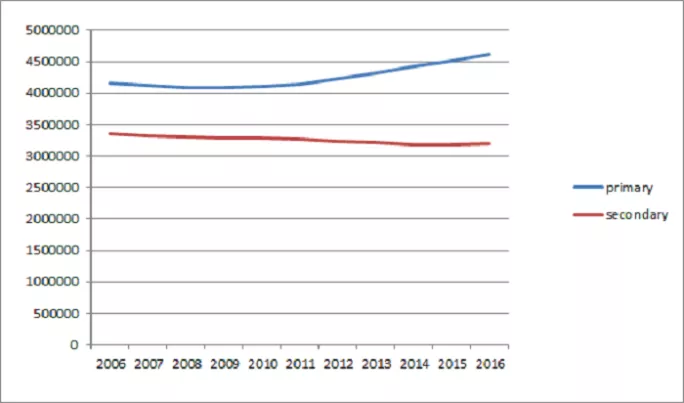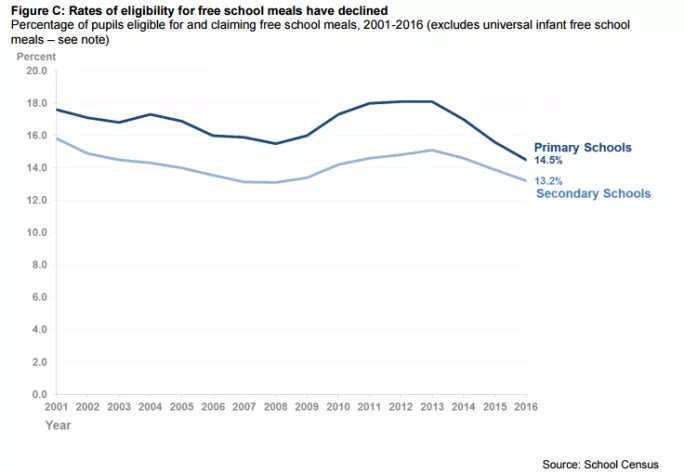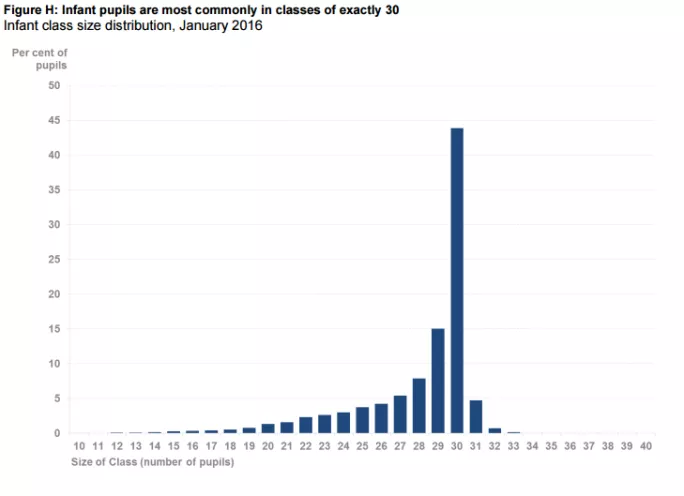The government published its annual schools census data today showing the number of pupils and schools in England.
This year’s statistics show that since last year there are more pupils, in fewer schools. There are now 8,559,540 pupils in 24,288 schools. In 2015 there were 8,438,145 pupils in 24,317 schools. That means schools are getting bigger. Claycots primary in Slough is the largest primary in England, and with 1,387 pupils it is the first break the 1,300-pupil barrier. It is expected to expand further and grow to 1,800 pupils.
There are 46 fewer independent schools than last year, the figures show, dropping from 2,357 in 2015 to 2,311 in 2016.
The statistics also show that the number of pupils with minority ethnic origins continues to rise slowly - 31.4 per cent of primary pupils and 27.9 per cent of secondary pupils have minority ethnic origins. This compares to 30.4 per cent of primary pupils and 26.6 per cent of secondary pupils in January 2015.
In primary schools, Asian pupils (10.6 per cent) are the largest ethnic minority and white non-British pupils (7.1 per cent) are the second-largest ethnic minority. Black and mixed-race pupils make up 5.7 per cent of pupils in state-funded primary schools, making them the joint third-largest minority ethnic groups.
In secondary schools, Asian pupils (10.3 per cent) are the largest ethnic minority and black pupils (5.5 per cent) are the second-largest ethnic minority. White non-British make up 5.4 per cent of pupils in state-funded secondary schools, making them the third-largest minority ethnic group.
Pupil numbers
- The number of pupils continues to rise. There are now 4,615,170 pupils in state primary schools, compared with 4,510,310 last year and 4,150,595 a decade ago. This year, there are 3,193,420 pupils in state secondaries - less than the 3,347,500 in 2006, but more than last year’s 3,184,730 pupils.
School size
- There are 24,288 schools in 2016, compared with 24,317 in 2015. The number of very large, ‘titan’ primaries is continuing to increase. There are now 109 primaries with more than 800 pupils, compared to 87 last year.
Independent schools
- There are 46 fewer independent schools than last year.
Free school meals
- The proportion of pupils known to be eligible for and claiming free school meals is at its lowest level since 2001, when the information was first collected. The DfE says that this is because there are fewer parents claiming benefits which make their children eligible for free school meals. The statistics do not include pupils claiming a free school meal under the universal infant free school meals programme.
Infant class sizes
- There are 95,210 infants in classes with more than 30 pupils - a drop from 100,765 in 2015. But higher than 2014, when 93,345 infants were in classes with more than 30 pupils. The most common class size is exactly 30 pupils.
Want to keep up with the latest education news and opinion? Follow TES on Twitter and like TES on Facebook









